June was a month of beautiful books, and awesome writers festival events for Hannah Kent’s third book Devotion, Kate Forsyth’s intriguing The Crimson Thread and Favel Parrett’s adorable MG book Wandi, plus the fascinating Sand Talk: How Indigenous Thinking Can Save the World by Tyson Yunkaporta, sweet audiobook Anne of Green Gables, narrated by Rachel McAdams, and The Silent Princess and may other faery tales of similar type for the Australian Fairy Tale Society discussion…
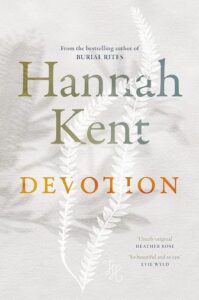 38 of 90 – Devotion by Hannah Kent
38 of 90 – Devotion by Hannah Kent
Devotion by Hannah Kent is utterly beautiful, and deeply compelling, a story of love and longing, of heartbreak and betrayal, of persecution and devotion, religion and the wild magic of nature, and the hope-filled but devastating pain of a love that Hanne and Thea don’t even have the language for. The writing is exquisite, a love letter to nature, from the snowy green woods of Prussia in 1836 to the raw beauty and heat of South Australia in the early days of its colonisation. I bought the book, but ended up listening to it on audio so I could “read” it before seeing Hannah speak at a writers festival in June. But I’ll definitely read the novel at some point, to savour the tenderness of the writing, and the evocative story, and the sweet and haunting characters.
* * *
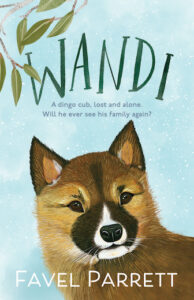 39 of 90 – Wandi by Favel Parrett
39 of 90 – Wandi by Favel Parrett
Wandi by Favel Parrett is an adorable MG book about a tiny dingo pup stolen from his family by an eagle, then dropped in a suburban backyard, injured and alone, and far from home. Told through his eyes, we see him pining for his parents, and share his sadness and confusion – and then witness his slowly making friends, coming to terms with his new situation, and learning to trust – on the way to becoming the most famous dingo in the world. When he was found, he was thought to have been a lost puppy or fox – but DNA revealed that Wandi was actually an Australian alpine dingo, thought to have been extinct in that area for many years. Now happily settled into life at the Australian Dingo Foundation’s sanctuary in Victoria, surrounded by friends, both human and animal, it’s hoped he will bring the rare breed back from the brink of extinction.
Author Favel Parrett fell in love when she met Wandi, and started volunteering at the sanctuary twice a week. She became a passionate advocate for dingo conservation, and was inspired to write her first children’s book, after three novels for grown-ups, so people could learn about this oft-maligned apex predators. “They’re all really much more gentle than you would think,” she says. “Dingoes are sweet, highly intelligent creatures. One thing I love about them is they really do what they want, you can’t tell them what to do.” She believes Wandi landed safely in that suburban backyard so he could become an ambassador for alpine dingoes, which are incredibly endangered,” she says. “With 60,000 followers on Instagram, he is the most famous dingo in the world – and he sure knows it.” Her beautiful book, described as “a children’s literary classic in-the-making from one of Australia’s most-loved authors,” is a sweet, moving story, and will hopefully shift some attitudes towards these precious pups.
* * *
 40 of 90 – Anne of Green Gables by Lucy Maud Mongomery
40 of 90 – Anne of Green Gables by Lucy Maud Mongomery
At a recent writers festival I listened to Kate Forsyth’s mini workshop about character, in which she mentioned that one book that breaks conventions is Anne of Green Gables by Lucy Maud Montgomery. Which I couldn’t remember if I’d actually read before. So I listened to the audiobook, narrated by Rachel McAdams, who I love, and it was really sweet and lovely and fun. (I also later discovered that I’d bought the six-book collection 10 years ago, but it was buried on my kindle, long forgotten. Oops!) I also enjoyed the Netflix series Anne with an E.
* * *
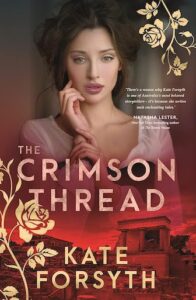 41 of 90 – The Crimson Thread by Kate Forsyth
41 of 90 – The Crimson Thread by Kate Forsyth
Kate Forsyth’s books are always auto-buys for me, and her new novel The Crimson Thread is just as wonderful and as deeply researched as her other historical novels, including the brilliant Bitter Greens, Beauty In Thorns and The Blue Rose, amongst others. Set in WWII Crete during the 1940s, when Aussie soldiers were hidden from the Nazis by the locals at great personal risk, it’s a fascinating story of love and war, family and friendship, rivalry and loyalty, freedom and trust, and who is worthy – and who isn’t – of redemption. Weaving in elements of the Greek myth of Ariadne, the Minotaur and the labyrinth in enchanting ways, it’s a beautifully written, gripping tale, and it was lovely hearing Kate speak about it with Hannah Kent at a recent writers festival, and being able to buy it a month before release day.
There’s a great article from Kate about some of the research she couldn’t fit in here – and I also love that Kate learned to embroider because her main character used that as a way to smuggle secret messages under the noses of the Nazis…
* * *
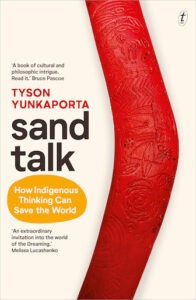 42 of 90 – Sand Talk by Tyson Yunkaporta
42 of 90 – Sand Talk by Tyson Yunkaporta
Sand Talk: How Indigenous Thinking Can Save the World by Tyson Yunkaporta is brilliant, fascinating and important, describing the potential applications of Indigenous Knowledges and the process towards resolving some of our world’s most complex crises. A member of the Apalech Clan of Far North Queensland, Tyson is a researcher and lecturer, founder of the Indigenous Knowledge Systems Lab at Deakin University in Melbourne, and has a podcast series, The Other Others. He examines Western knowledge systems and practices from an Indigenous perspective, rather than looking at Indigenous knowledge systems and practices from a Western perspective. For the book he begins each chapter using sand talk, which honours the Aboriginal custom of drawing images on the ground to bring clarity to complexity, as well as his carving of traditional tools and weapons as a way to anchor and explain each chapter. Playful and profound, practical and philosophical, it’s beautifully narrated by the author, and definitely worth checking out.
* * *
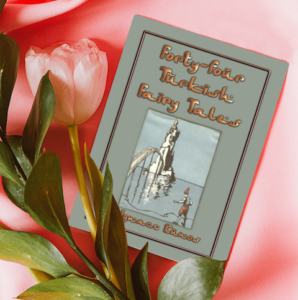 43 of 90 – The Silent Princess and other similar faery tales
43 of 90 – The Silent Princess and other similar faery tales
I usually preface every one of our faery tale discussions with “but all faery tales are weird” – and this one is no exception! The Silent Princess is a Turkish fairy tale, structured as a frame story with three inserted tales – The Magic Pomegranate (or The Four Skilful Brothers); The Carpenter, the Tailor and the Clergyman; and Three Suitors at the Graveyard. You can read them all here.
The oldest of these tales is The Magic Pomegranate – the earliest known version appears in Baital Pachisi, first published in 1077, and another version, The Three Princes and the Princess Nouronnihar, can be found in One Thousand and One Nights, a collection of Middle Eastern and South Asian stories compiled in Arabic during the Islamic Golden Age of the eighth to the thirteenth centuries. Italian writer Giovanni Straparola translated a version into Italian in his Pleasant Nights collection, published around 1550, and seventeenth century Italian poet Giambattista Basile included a variant in his collection The Tale of Tales,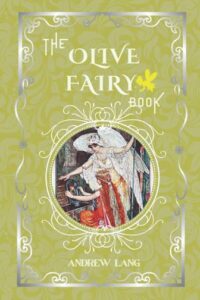 which he called The Five Brothers – and which the Grimm Brothers published as The Four Skilful Brothers in the 1800s, crediting Basile as the source.
which he called The Five Brothers – and which the Grimm Brothers published as The Four Skilful Brothers in the 1800s, crediting Basile as the source.
The four narratives were first found in a united story in 1896 by the Hungarian folklorist Ignacz Kunos in Forty-Four Turkish Fairy Tales: 44 Tales, Legends and Stories from Turkey. In 1907, Andrew Lang included it in The Olive Fairy Book – one of the twenty-five “rainbow fairy” books that his wife Nora actually compiled and translated into English, but he took the credit for. (Don’t get me started on this, or George Orwell, or any of the other men who took the credit for writing and scholarship done by their wives!)


Get Social